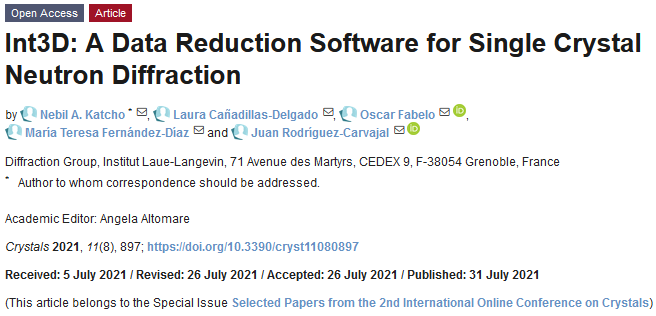D19
Instrument no longer available - Thermal neutron diffractometer for single-crystal and fibre diffraction
Int3D
Int3D is a software for data reduction of single crystal neutron diffraction experiments, developed by the diffraction group of the Institut Laue Langevin (ILL). This project started in 2019, with the aim of replacing the outdated software of the D19 diffractometer. However, it has been designed to be easily extended to any diffractometer operating with a 2D detector. We are working in its extension to the D9 and D10 diffractometers of the ILL.
Int3D is a Graphical User Interface (GUI) application, which allows users to easily perform all the tasks needed to convert raw data into integrated intensities. Some of these tasks are summarized below:
- Scan the data to locate reflection peaks, and visualize them in the reciprocal space (see next item).
- Determine the crystal cell and crystal orientation, i.e., the orientation matrix. This is done with another GUI application, GetUB, which is embedded in Int3D. GetUB allows users to:
- Visualize the measured reflections and proposed cells in reciprocal space.
- Interact with reflections in multiple ways: selection, classification, deletion, indexing, filtering.
This publication, published as an Open Access paper in Crystals, described the software in detail . The downloadable supplementary information, consists of a series of videos illustrating how the program works.
 | This software development is a FILL2030 initiative, a European Union project within the European Commission's Horizon 2020 Research and Innovation programme under grant agreement N°731096. |  |


